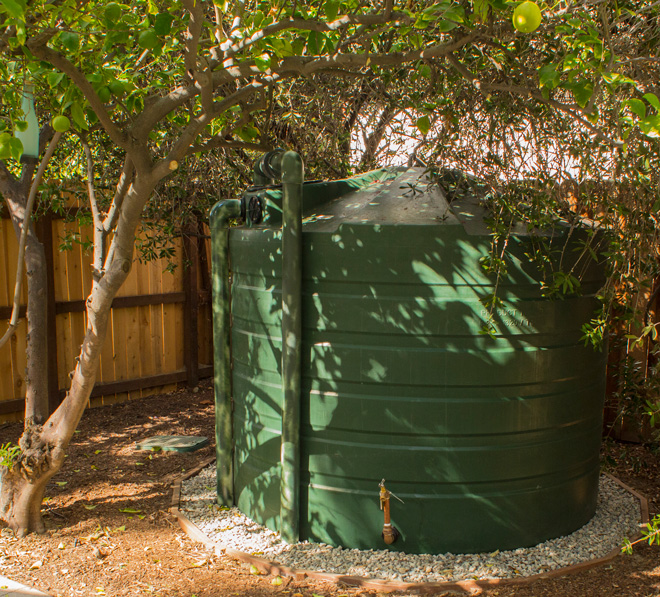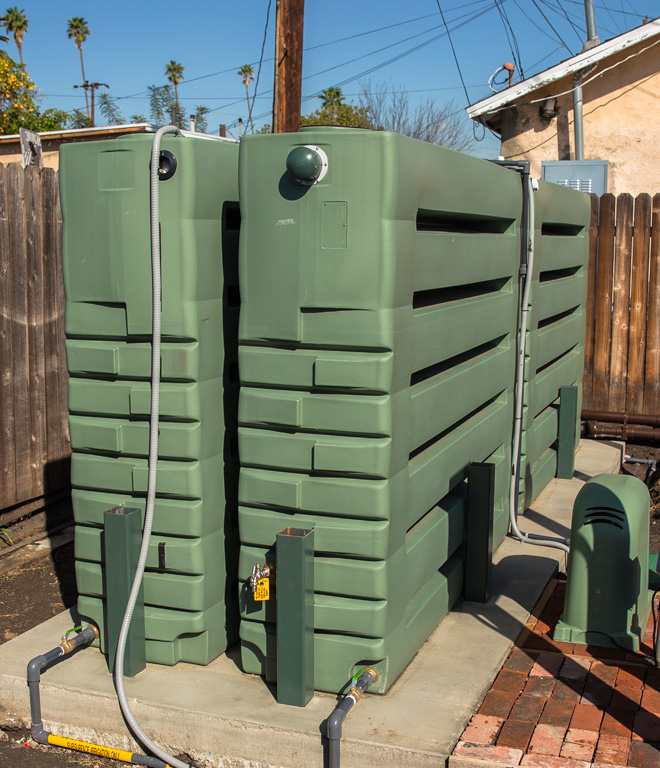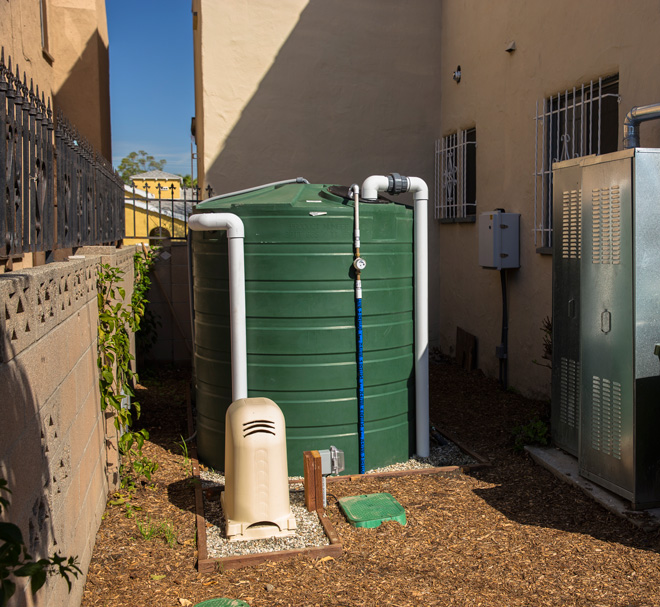

Contributor
- Topics: Archive
In many cases seasonal storms represent an untapped resource just waiting to be harvested. Rainfall is free water.
Do the math!
To convert inches of rainfall into gallons of harvested water multiply the square footage of your catchment area x inches of rain x .62. So an inch of rain falling on a 1,000 square foot roof amounts to around 620 gallons or, factoring in a 10 percent loss due to evaporation and/or absorption, a potential 558 gallons of harvested water.
Depending on the size of your catchment area it looks like this:
 As you can see, the volume adds up quickly. Just 1 inch of rain captured off a small 10- by 10-foot patio roof will fill a 55-gallon rain barrel. For catchment areas larger than 100 square feet we recommend you consider a larger tank or cistern to handle the volume.
As you can see, the volume adds up quickly. Just 1 inch of rain captured off a small 10- by 10-foot patio roof will fill a 55-gallon rain barrel. For catchment areas larger than 100 square feet we recommend you consider a larger tank or cistern to handle the volume.
In what was previously referred to as an “average” year Los Angeles could expect about 15 inches of rain; lately it’s been closer to 6 inches. Seattle precipitation averages about 38 inches, Portland gets around 42 inches, and San Francisco receives about 24 inches. Again, if you do the math you can see we’re talking about a significant volume of water. Then start multiplying those figures by everyone in your neighborhood!
Factor by rainfall and it looks like this:
 Consider a larger catchment area and the numbers really begin to add up.
Consider a larger catchment area and the numbers really begin to add up.
Following are some examples of larger tanks installed as a part of the StormCatcher pilot project in Los Angeles conducted by The Greater LA Water Collaborative. As you’ll see in the photos below, even dry areas like drought-stricken Los Angeles can make the most of seasonal storms.

In this case study (photo above) we installed a 1,320-gallon tank that was just less than 7 feet in diameter and slightly more than 6 feet tall. Automated/manual controls convey captured water to a rain garden located at the front of the property where it is released to recharge the soil and support deep-rooted plants in that area. An additional hose attachment on the side of the tank allows for watering nearby citrus trees.

Connecting multiple tanks allows for increased storage volume. In this instance we connected four 2000-liter (528 gallon) tanks for a total holding volume of just over 2,000 gallons. The narrow profile tanks are just 22 inches wide and 94 inches long.

This case study featured connecting two 865-gallon tanks for a total holding capacity of 1,730 gallons. An external pump delivers water to the property’s drip irrigation system.
For more information about these projects visit The Greater LA Water Collaborative website and to learn how you can manage your garden’s water resources read Making a Difference.










Responses